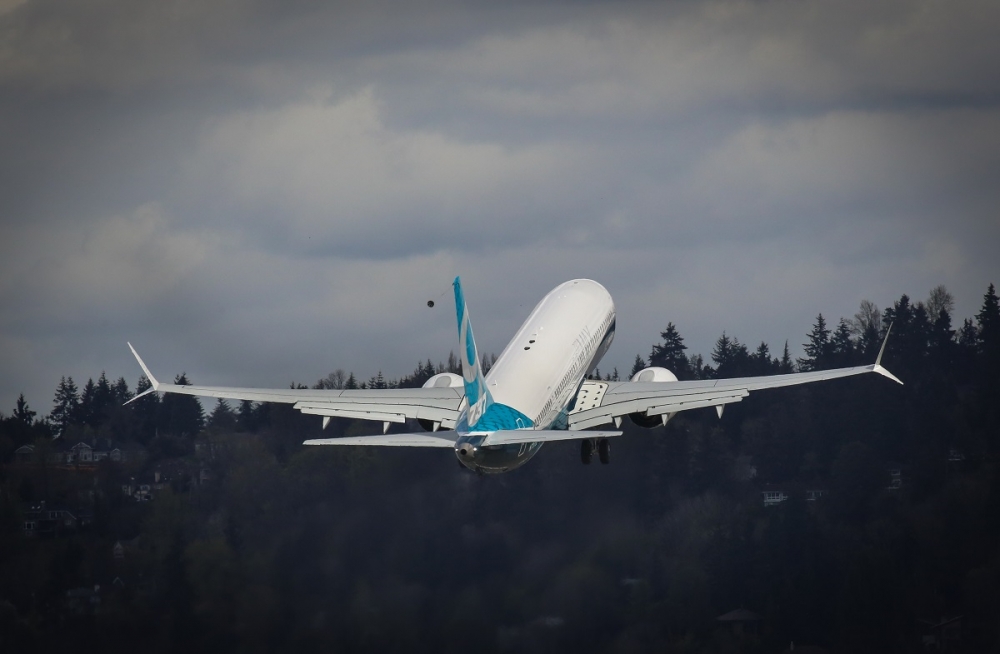Boeing expects to continue a 737 family tradition of continuous improvement with its new fuel-efficient planes and sees scope for the kind of efficiency gains it saw with the successful “Next Generation” family.
The US manufacturer’s 737 MAX aircraft are 14 per cent more efficient than the latest NG’s but they are 20 per cent more efficient than the planes that introduced the type in 1998.
This is because in 2001 the company added winglets to the NG and in 2008 it reduced the weight of the aircraft with a carbon brake system.
Further aerodynamic and engine improvements in 2011 reduced the fuel burn of the NGs by 6 per cent over their 1998 counterparts. The boost was in addition to an improvement of about 13 per cent between the introduction of 737 classics in the 1980s and the NG.
The MAX program’s chief project engineer and deputy program manager, Michael Teal, expects similar efficiency improvements to occur with the new aircraft.
“Our expectation is absolutely,’’ he says about continuing the “family tradition”. “So, yes, we continuing to look at learnings from the flight test program where we can improve the drag of the airplane and I know the engine company as well is looking at their opportunities.
“Together, our expectation is we’re just going to continually improve the product similar to what we did on the NG family.’’
Celebrating its 50th anniversary this year, Boeing’s single-aisle workhorse achieved another milestone on Thursday when the MAX-9 conducted its first flight over Puget Sound near Seattle.
The aircraft took off from Renton, the 737’s manufacturing base, and completed a successful flight of two hours and 42 minutes during which flight crew Christine Walsh and Ed Wilson performed tests on flight controls, systems and handling qualities.
The MAX 9, with a maximum capacity of 220 passengers and a range of 3,515 nautical miles, will undergo comprehensive flight testing ahead of customer deliveries in 2018.
It is the second variant of the MAX family to take to the air and the smaller MAX 8 is due to enter service next month.
The MAX 8 has the same range as the MAX 9 and is able to carry up to 200 passengers in a single class configuration or 162 passengers in two classes.
The smallest member of the family, the MAX 7 is due to complete final assembly in the fourth quarter of 2017 with first delivery scheduled in 2019. The longer-range MAX 7 will be the aircraft best suited to operations in hot and high conditions.
Currently being offered to airlines, but yet to be confirmed, is the MAX 10X.
Assuming it gets the response it needs from airlines, firm configuration for the MAX 10X is scheduled for the end of 2017 with delivery around 2020.
Teal sees this as an aircraft, with its capacity to up to 12 additional passengers compared to the MAX 9 and a similar range, that could be attractive in the lucrative Asia-Pacific market.
“That is going to put an aircraft in the marketplace with lowest seat-mile costs compared to any of the competitor’s aircraft and bringing more revenue in with that additional 12 seats,’’ he said. “So I think that airplane is very, very well suited to that marketplace.’’
The MAX range is competing with the Airbus A320neo family, which is already in service and has also has proved popular with airlines.
Boeing says its planes have lower operating costs than the A320neo family and so far it has 3700 firm orders from 86 customers. It is ramping up production to cater for the demand and expects to be producing 57 a month by 2019.
Read: Boeing 787-10 and AirbusA319neo have first flights.
The biggest boost to the MAX’s efficiency has been the CFM LEAP-1B engine but there are also aerodynamic tweaks to the wings and the tail that allow it to deliver its 14 per cent better fuel burn.
The MAX AT winglet improves the aircraft’s lift over drag by creating an effective span, according to Teal.
“We’ve proven it in the flight test program by measuring it. We are getting efficiency improvements from it.
Boeing engineers also improved the aft body aerodynamics from the flat tail design that has adorned the aircraft since 1967 by changing the shape to improve drag.
There are also fly-by-wire spoilers to improve the handling characteristics and a new electronic engine bleed system that can vary the air pulled from the engine according to the passenger load.
Internal improvements include a move from five screens on the flight deck to four bigger displays that are common to the B787 and B777X and are designed to improve situational awareness.
At the same time, it has retained commonality with the NG so that less than a day’s training using a laptop is required to move between the two.
There is also an onboard network system that holds electronic data on key aircraft parameters in one storage space that allows airlines to access the plane’s health management systems wirelessly during flight or the ground.
Maintenance personnel can now also check for problems from the flight deck displays and decide whether an aircraft can continue on with minimum equipment list fault.
“That is to improve the dispatch reliability of the airplane,’’ says Teal, who says he expects that reliability to be close to the NG’s 99.7 per cent from the get-go. “Airlines from around the world have been working with us on that system and their mechanics have been on the airplane and they just love it.
"It’s really going to improve the maintainability and the reliability of the aircraft.’’
From a passenger standpoint, the MAX family features the Boeing Sky Interior that has been available since 2011 and optional space bins that allow wheelie bags to be stored on their sides.
























